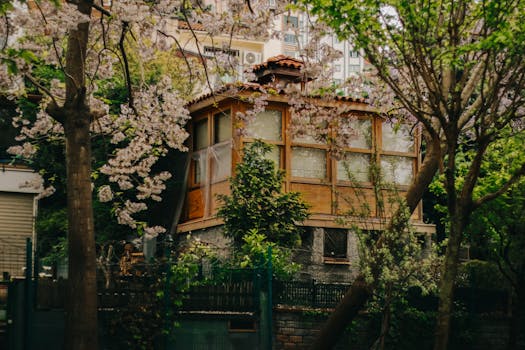
Urban Green Spaces: The Future of Outdoor Living in European Cities by 2025
Introduction to Urban Green Spaces
Urban green spaces are becoming increasingly important in European cities as they provide a range of benefits for both the environment and the people living in these cities. From parks and gardens to green roofs and urban forests, these spaces help to mitigate the effects of climate change, improve air quality, and provide habitats for wildlife. In this article, we will explore the future of urban green spaces in European cities and how they will shape the future of outdoor living by 2025.
The Benefits of Urban Green Spaces
Urban green spaces have numerous benefits for the environment and human health. Some of the most significant advantages include:
- Improved air quality: Urban green spaces help to absorb pollutants and particulate matter, improving the air quality in cities.
- Climate change mitigation: Green spaces help to reduce the urban heat island effect, which can lower the temperature in cities and reduce the need for air conditioning.
- Wildlife habitats: Urban green spaces provide habitats for a range of wildlife, from birds and insects to small mammals and plants.
- Recreational spaces: Green spaces provide areas for people to relax, exercise, and socialize, improving mental and physical health.
The Future of Urban Green Spaces in European Cities
By 2025, urban green spaces will play an even more critical role in European cities. Some of the key trends that will shape the future of these spaces include:
- Sustainability: Urban green spaces will be designed with sustainability in mind, incorporating features such as rainwater harvesting, green roofs, and solar power.
- Community engagement: Green spaces will be designed to engage with local communities, providing areas for socializing, recreation, and education.
- Technological innovation: Urban green spaces will incorporate technological innovations such as smart irrigation systems, air quality monitoring, and urban forestry management software.
Case Studies of Urban Green Spaces in European Cities
Several European cities are already leading the way in terms of urban green spaces. Some examples include:
- Barcelona, Spain: The city’s superblock program has created extensive green spaces, reducing traffic and improving air quality.
- Copenhagen, Denmark: The city’s green roof initiative has created over 150,000 square meters of green roofs, providing habitats for wildlife and reducing stormwater runoff.
- Paris, France: The city’s urban forestry program has planted over 20,000 trees, improving air quality and providing shade for residents.
Conclusion
Urban green spaces are a critical component of sustainable and livable cities. By 2025, these spaces will play an even more vital role in European cities, providing a range of benefits for the environment and human health. As cities continue to grow and evolve, it is essential that urban green spaces are prioritized, incorporating sustainable design, community engagement, and technological innovation.






